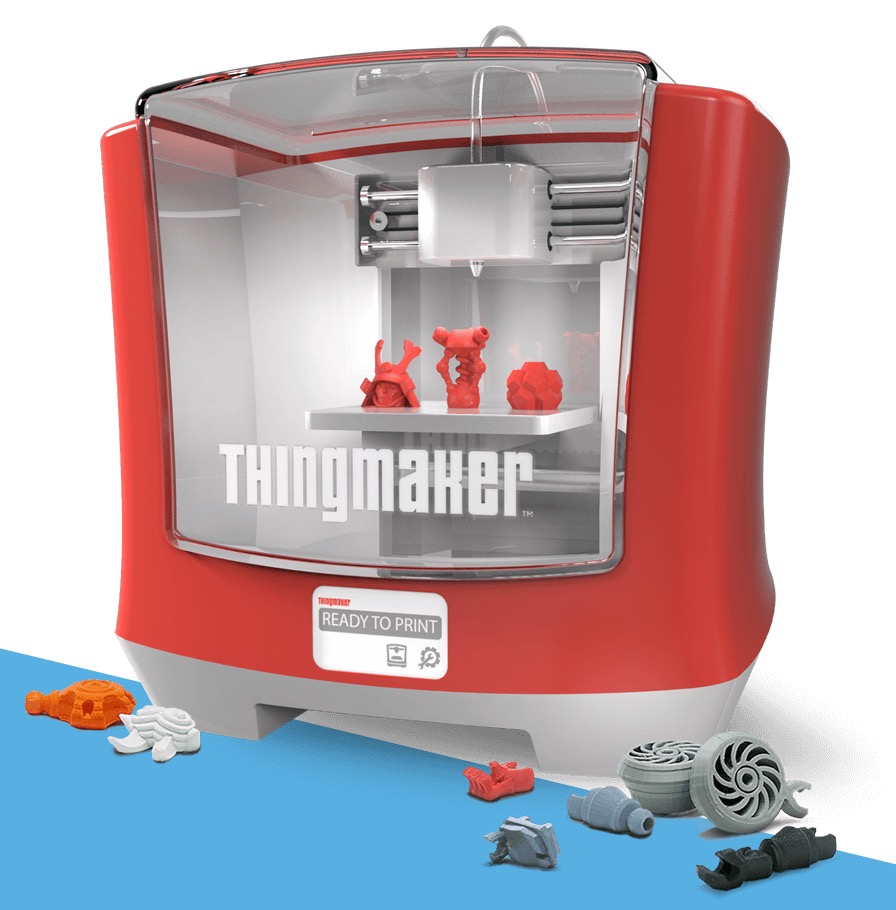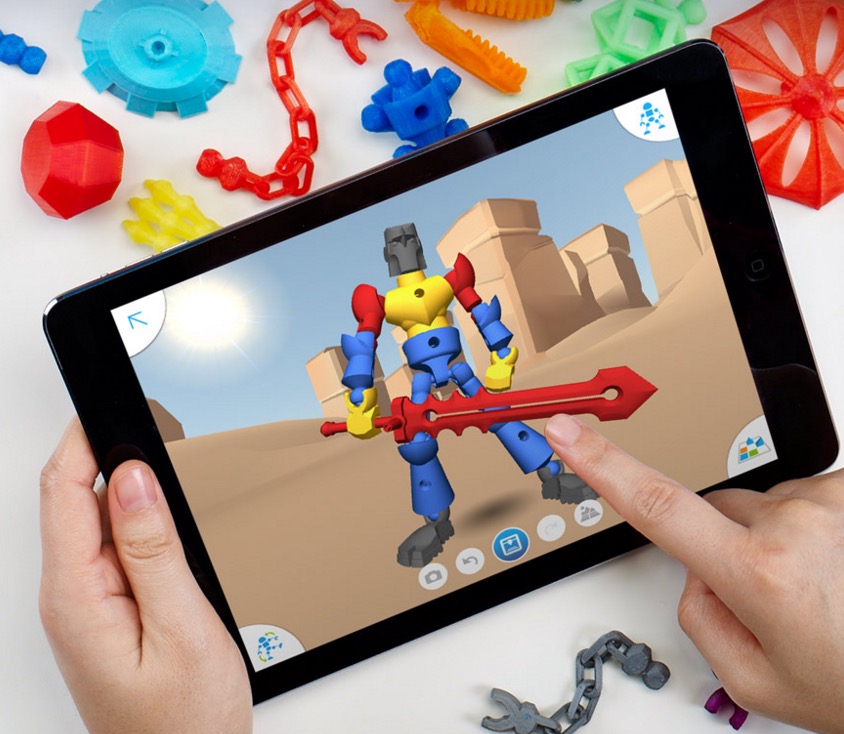
Mattel (and Autodesk) announced the “Thingmaker”, a 3D printer for kids. But will it succeed? We’re not so sure.
Let’s look at what was announced. Really, it’s three things:
- A small, basic 3D printer with a couple of kid-friendly features, called the “Thingmaker”
- A tablet app, again designed for kids, called the “Thingmaker Design App”
- A cloud service to tie everything together
The workflow for children is straightforward:
- Use the app to download a 3D model from a library, modify it, or create a 3D model from scratch
- Send the 3D model to the printer via the cloud service
- Pick up the printed part from the printer
It seems easy, but then again, this is pretty much the same workflow you’d use with ANY 3D printer, even the ones that frustrate their operators.

This, we suspect, is the key to Mattel’s success here. While the Thingmaker includes a locking door and the hot extruder is secured to prevent burns, we’re wondering how hard it is to remove a print from the bed? Do you require a dangerously sharp scraper? How hard is it to free up a filament jam – which will inevitably occur? Is there a suitable air filtration system to prevent nanoparticle emissions?
In other words, it’s not just the basic capabilities and functions, the issue is how will this device actually work in the field – or children’s play areas? The devil is in the details, as many 3D printing enthusiasts have discovered through years of experimentation.
The other thing we’re wondering about is that this scenario has been played before: there has been easy to use 3D printers, designed for kids. All of them have not been particularly successful. There have been easy-to-use tablet 3D software for kids, and they haven’t increased the use of 3D printing significantly. There have been libraries of 3D models and 3D generators specifically designed for kids (e.g. Cubify) and that didn’t work out so well.

Mattel seems to be playing out the same business plan that others have already tried and abandoned. What’s the difference with their strategy?
We can see only one significant item: Mattel itself is a very well-known toy company with enormous reach. Their network of distribution and resellers is massive.
However, even a large distribution network did not help Cubify. Even MakerBot, with their large distribution network, has more or less retreated into the world of professionals and awaits further developments to make things easier for the general consumer.
Mattel has priced the printer at the low cost of USD$300, so that alone may attract some buyers. It’s to be released in the fall of 2016: you can actually pre-order it here. But by then the world of 3D printing will no doubt have undergone several revelations of new products and technologies, so we have no way of knowing how Mattel’s offer will appear at that time.
We expect Mattel’s venture to be a burst of interest, followed by rapidly declining viewing, similar to what others have seen. Why? Because they have not solved the fundamental problem of desktop 3D printing: it’s too hard for most people.

